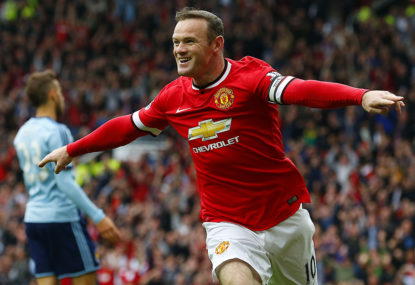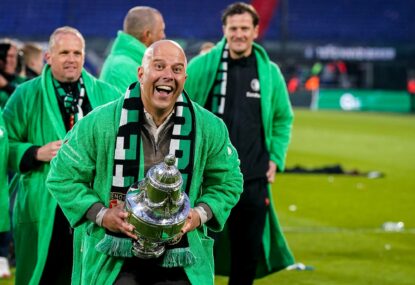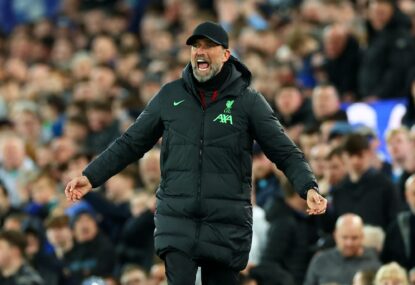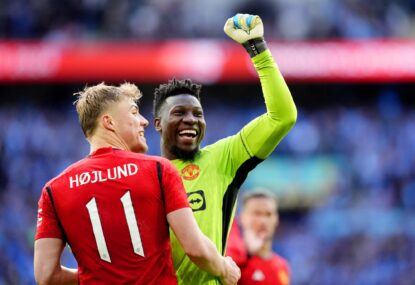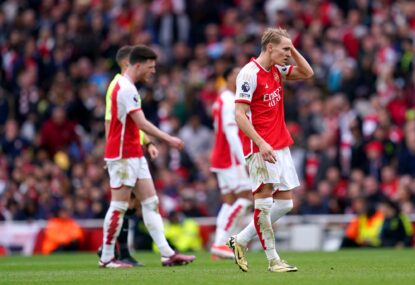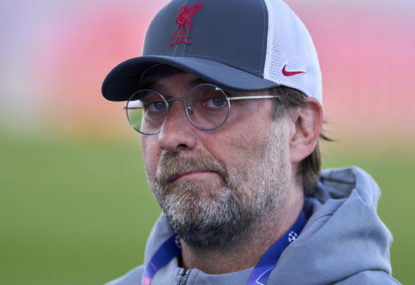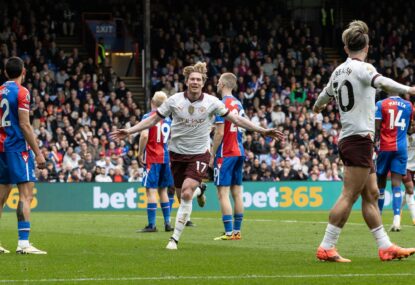It now seems utterly unremarkable, as much a part of the make up of the game as the ball, or the shin pads, or the hair gel.
But when you think about it, having the name of a corporation emblazoned across your chest does seem a little strange. Grand old teams in the Premier League take to the field clad in their club colours, many of them in stadiums with names like the King Power Stadium or Etihad Stadium.
These are the uniforms of a century or more of history, the livery of a storied heritage that trails back into the past, and will surge on into the future. The throngs of the faithful wear the same colours, and theirs bear the frayed threads of a lifetime of devotion.
To kiss the badge, in the ecstasy of a goal celebration, is now a task that requires a player to furrow over their shirtfront, search past the giant commercial symbol that dominates the majority of it, before they can pucker up properly.
Heaven forbid they accidentally smooch the Wonga logo.
So who are the entities on the shirtfronts of the Premier League? How much have they paid to be there, on that hallowed cloth, and for how long? Let’s go through the the five most lucrative deals.
Manchester United
Prior to the 14-15 season, Chevrolet signed a world-record $560 million deal to become Manchester United’s principle shirt sponsor.
Having been the club’s official car sponsor since 2012 (as well as arch-rival Liverpool’s), the General Motors owned company ensured they would be present on the shirt of the most commercially rampant sporting organisation for the next eight years.
They command over a third of the market share for auto mobiles in the United States.
In 2010, GM recalled 1.3 million Chevy Cobalt compacts, because of a safety issue related to the power steering. In 2014, the Cobalt was again recalled because a number of fatal crashes, dating back as a far as a 2005, had been linked to a faulty ignition switch in the vehicle, which cut power to the car while in motion.
The company continued to use the ignition switches in question for nearly a decade despite knowing about the fault. For this, they were fined $35 million by the National Highway Traffic Safety Administration in May last year.
Their 2013 earnings peaked at a reported $5.34 billion.
Manchester City
Etihad Airways and Emirates are the flag carriers of the United Arab Emirates. After announcing themselves as Manchester City’s primary sponsor in 2009, Etihad expanded their visibility in 2011 by securing the right to rename the City of Manchester stadium, in a deal worth £400 million, which smashed the previous held record for a deal of this kind.
Their logo is set to remain on the City shirt until 2022. Manchester City are owned by the Abu Dhabi United Group, a private equity company owned by Sheikh Mansour bin Zayed Al Nahyan, a member of the UAE’s ruling royal family.
Though Etihad Airways had long denied accusations that they receive unfair state subsidies or support, in May last year the Australian Financial Review determined that the company had been given access to a $3 billion interest free loan from the UAE royal family.
The airline has also courted controversy by refusing to include Israel on its flight map, despite flying to nearly every other Middle Eastern country. The airline became profitable for the first time in 2011, and its 2012 earnings were a reported $170 million USD.
Arsenal
The commercial relationship between Arsenal Football Club and Emirates Airways has been one of the most enduring in the Premier League, with the company having held stadium naming rights since 2004, and primary shirt sponsorship since 2006.
They renegotiated the shirt sponsorship in 2014 to run until 2019, paying Arsenal £30 million per year over that period. The airline has achieved profitability for 25 consecutive years (with the 2013 return reported as being in the region of $845 million USD) and has been held up as a model company in terms of turnover, rapid expansion and customer satisfaction.
They are also the shirt sponsors of football clubs AC Milan, Real Madrid and Paris Saint-Germain, among others. They ended a commercial agreement with football’s governing body FIFA in the wake of the 2014 Qatar World Cup bribery scandal, though the company insisted their decision not to extend the deal was not due to the controversy.
But, like fellow UAE airline Etihad, Emirates has been involved in incidents involving accusations of anti-Israel sentiments. A contract between the airline and the Transport for London over a Thames cable car system had to be rewritten after clauses were found contained in it that appeared to ban the TFL from entering into other commercial agreements with Israeli banks or corporations.
Liverpool
Standard Chartered, a multinational banking and financial services company, became the main sponsor of the Liverpool Football Club, and last season extended their agreement to the end of the 2015-16 season. The previous agreement, which ended at the end of the 13-14 season, has the company pay the club £20 million per year for the privilege of appearing on the match shirt.
Though they are based in the UK, the company do not operate there as a bank, rather, they receive 90 per cent of their profits from Asia, Africa and the Middle East.
In 2012, the bank admitted to facilitating illicit money transfers on behalf of Iran, Sudan, Myanmar and Libya, accusations which it had previously denied strongly.
The company was handed two separate fines, which totalled a combined $667 million USD. It was found that, over a ten-year period, Standard Chartered had “schemed with the government of Iran and hid from regulators roughly 60,000 secret transactions, involving at least $250bn, and reaping [the company] hundreds of millions of dollars in fees.”
The company’s 2013 revenue was in excess of $17.5 billion USD.
Chelsea
Chelsea’s sponsorship deal with Korean electronics company Samsung extends only until the end of the 14-15 season. At that point the club will have banked around £41 million for allowing the branding to appear on their home-and-away kits.
Samsung became the world’s biggest advertiser in 2012, spending $4.3 billion on advertising and marketing, and in 2013 that figure reportedly jumped up to $14 billion.
In spite of this, the company’s profits crashed by 27 per cent in 2014.
The company has also been embroiled in a number of ethical scandals, most significantly the report released by the China Labor Watch watchdog body last year that alleged Samsung had been using child labour in some of its Chinese factories.
In the Dongguan Shinyang Electronics factory (a Samsung supplier of phone covers and parts), the report detailed, children were employed “without a labor contract, do the same work for the same long night-shift hours and at the same intensity as adult workers but are paid one-third less. Child labor are only paid for 10 hours of work a day despite working for 11 hours.”
Samsung suspended ties with the supplier after the child labour scandal became public. This came seven years after Samsung were involved in a high-profile corruption scandal, after an ex-employee, chief lawyer Kim Yong Chul, revealed he had been instructed to hand out bribes and fabricate court evidence.
The more you know.





























































































